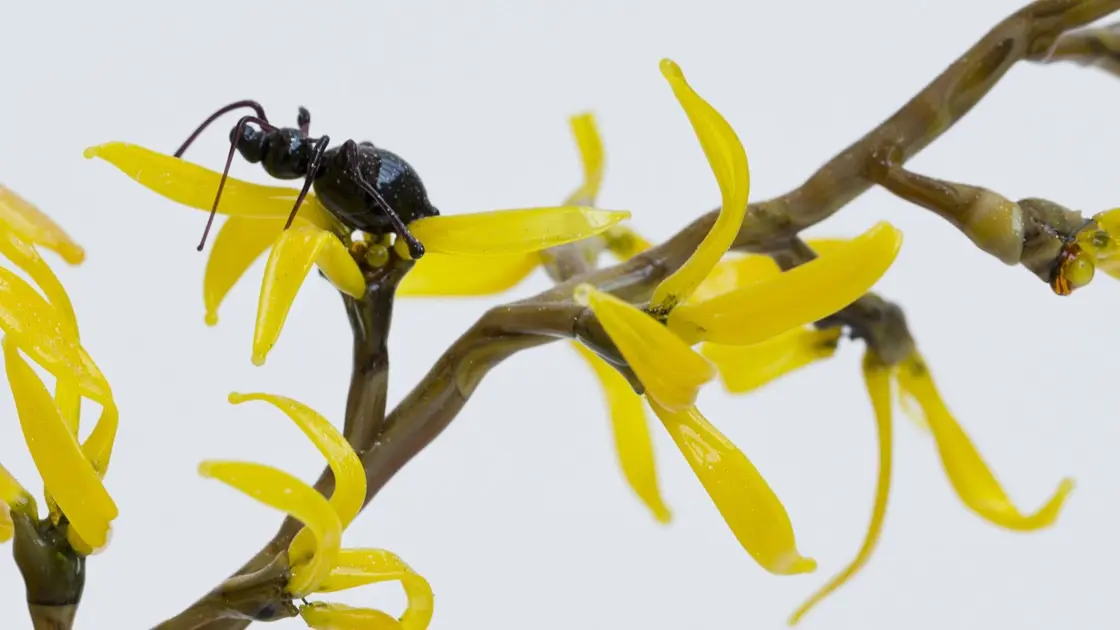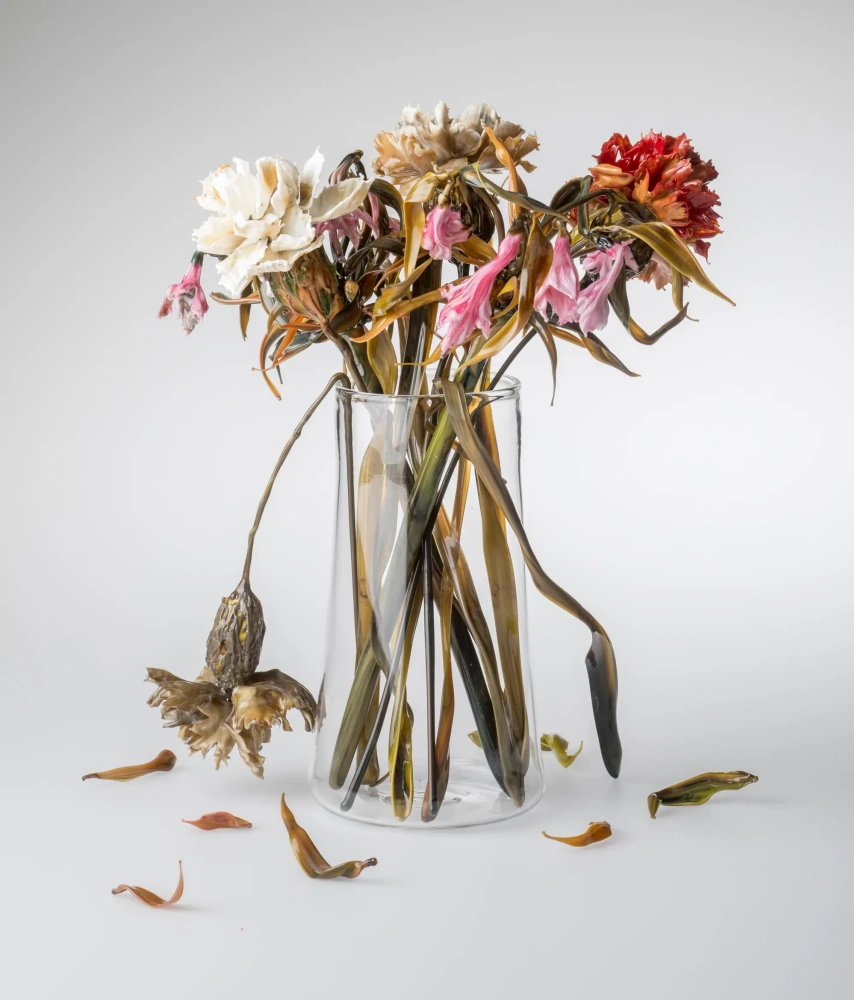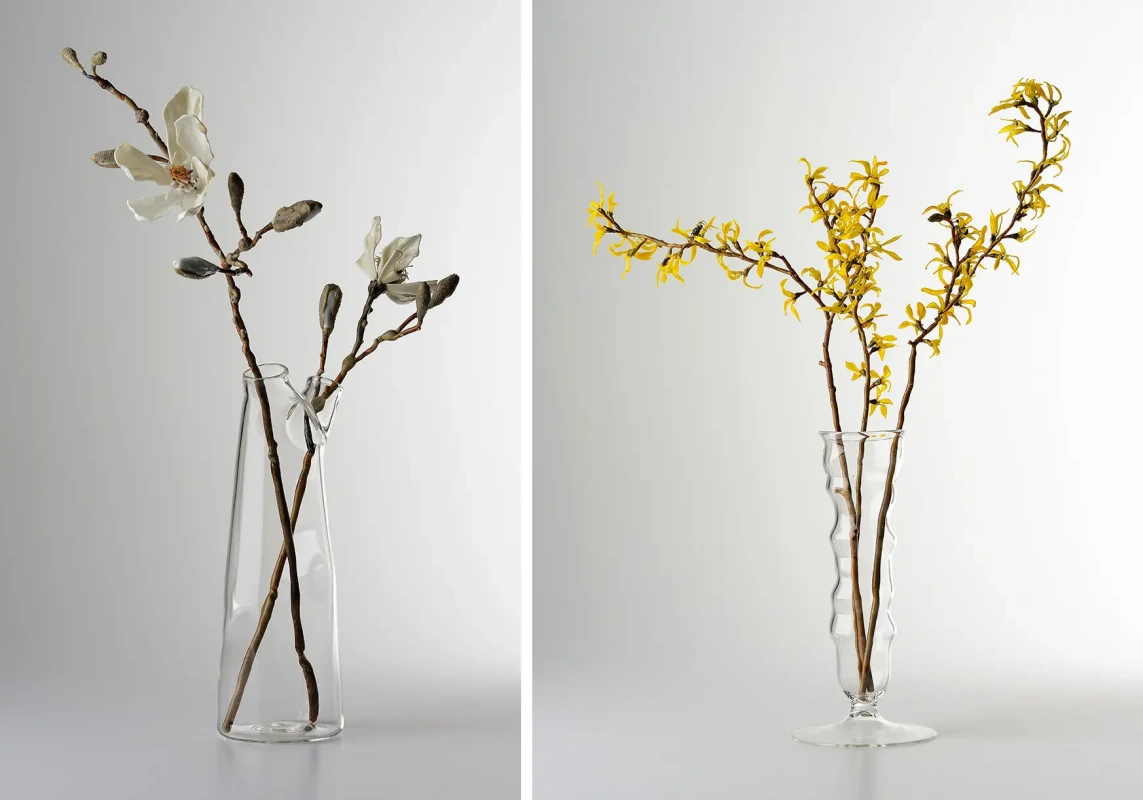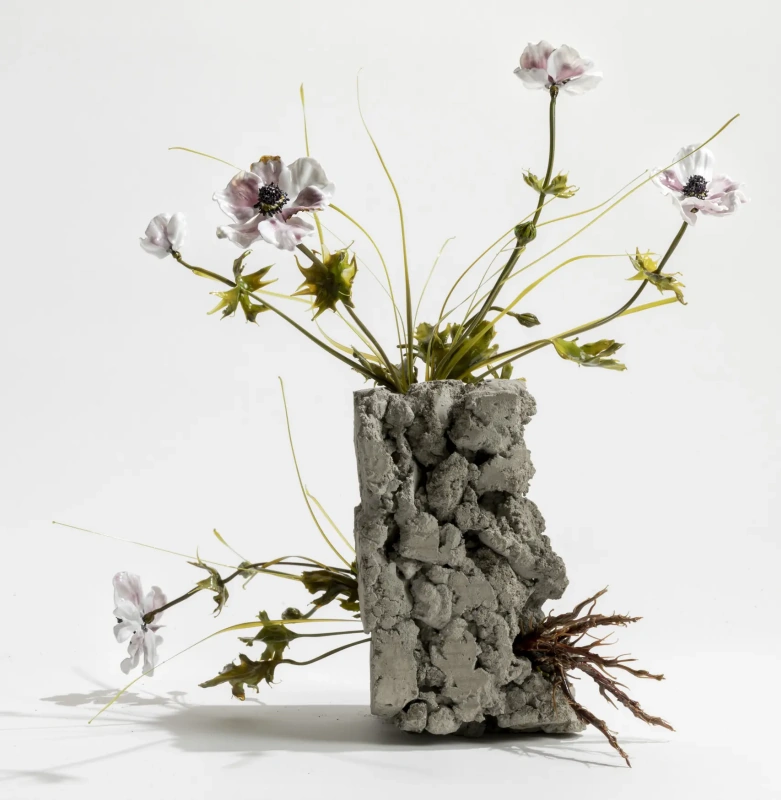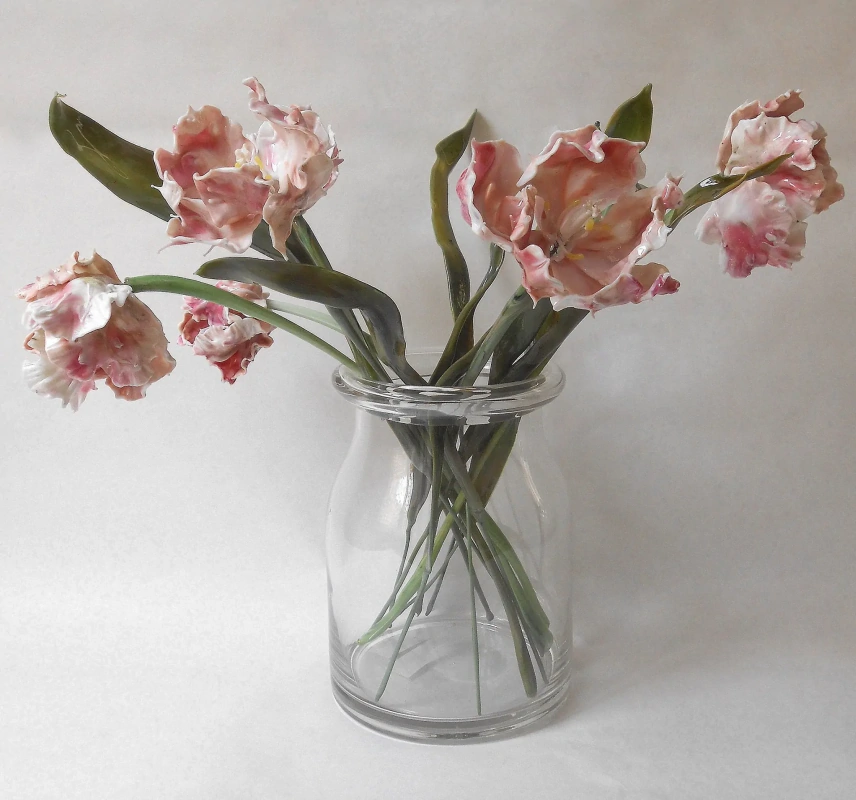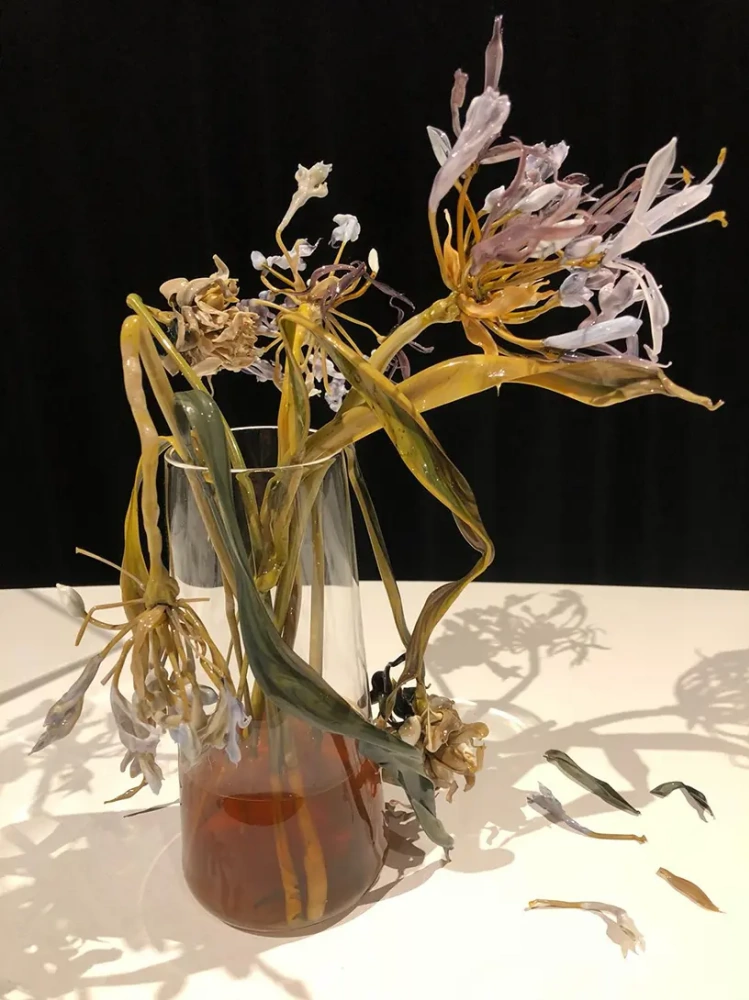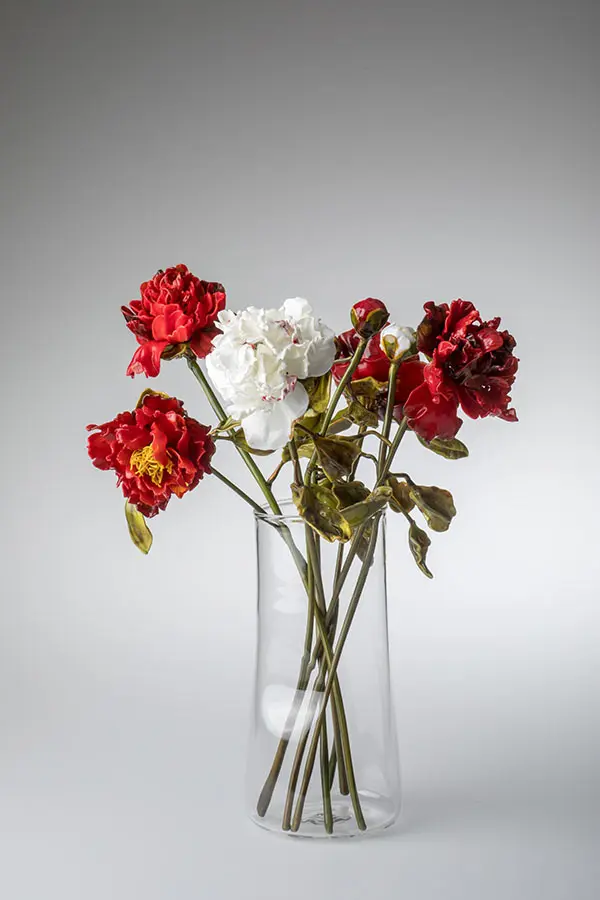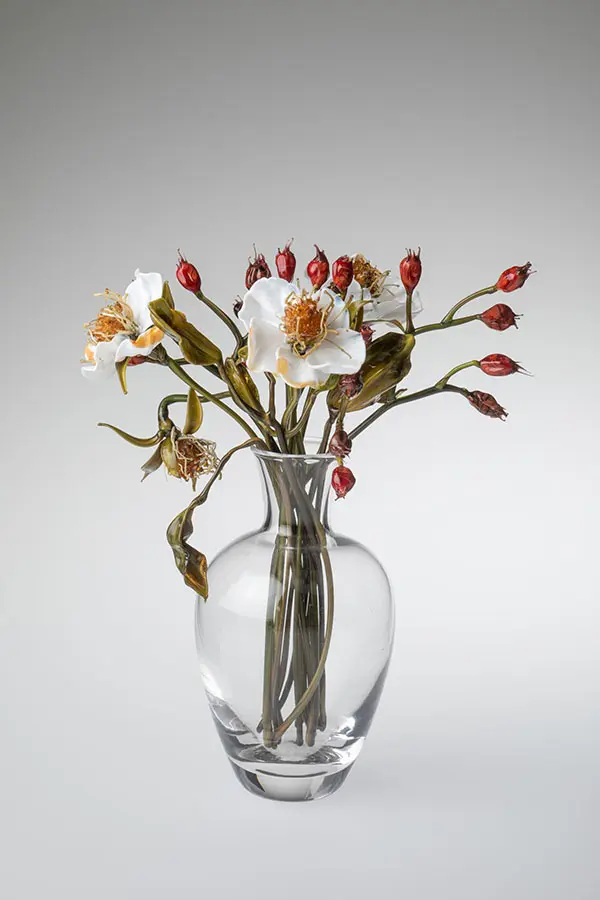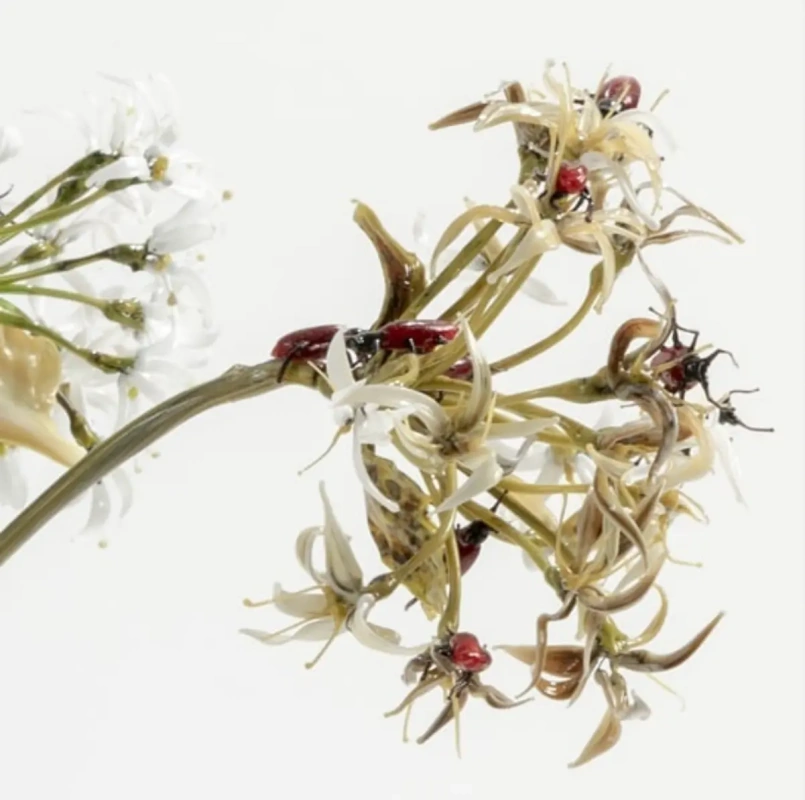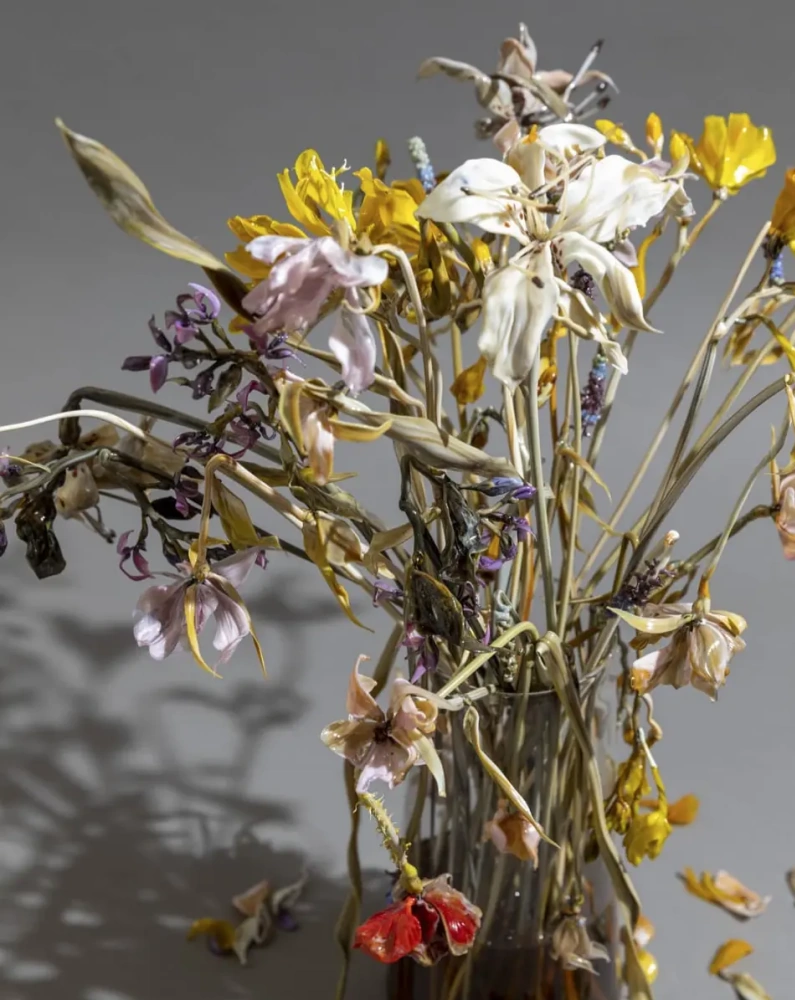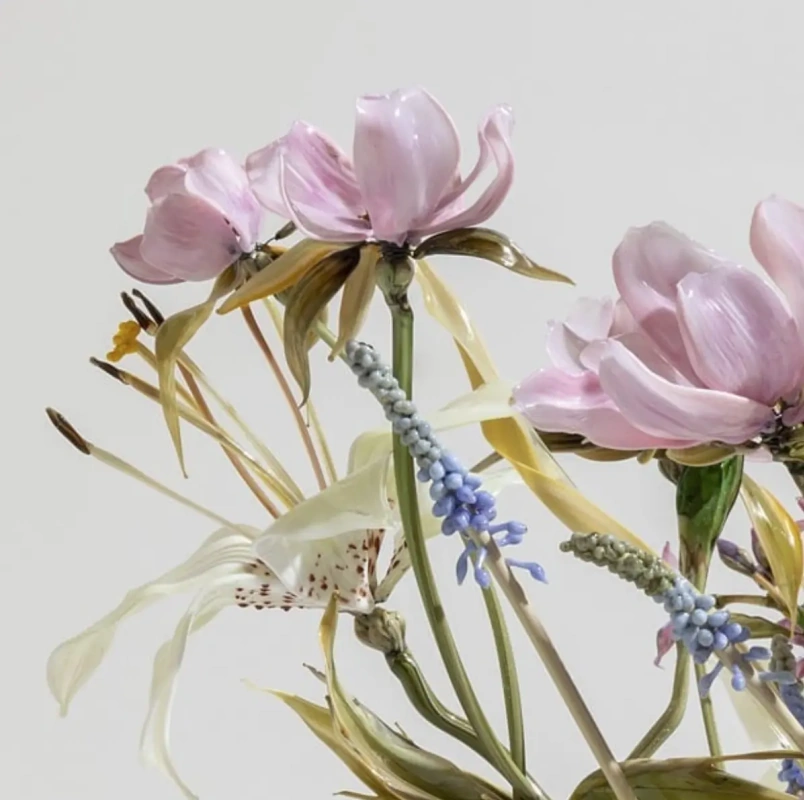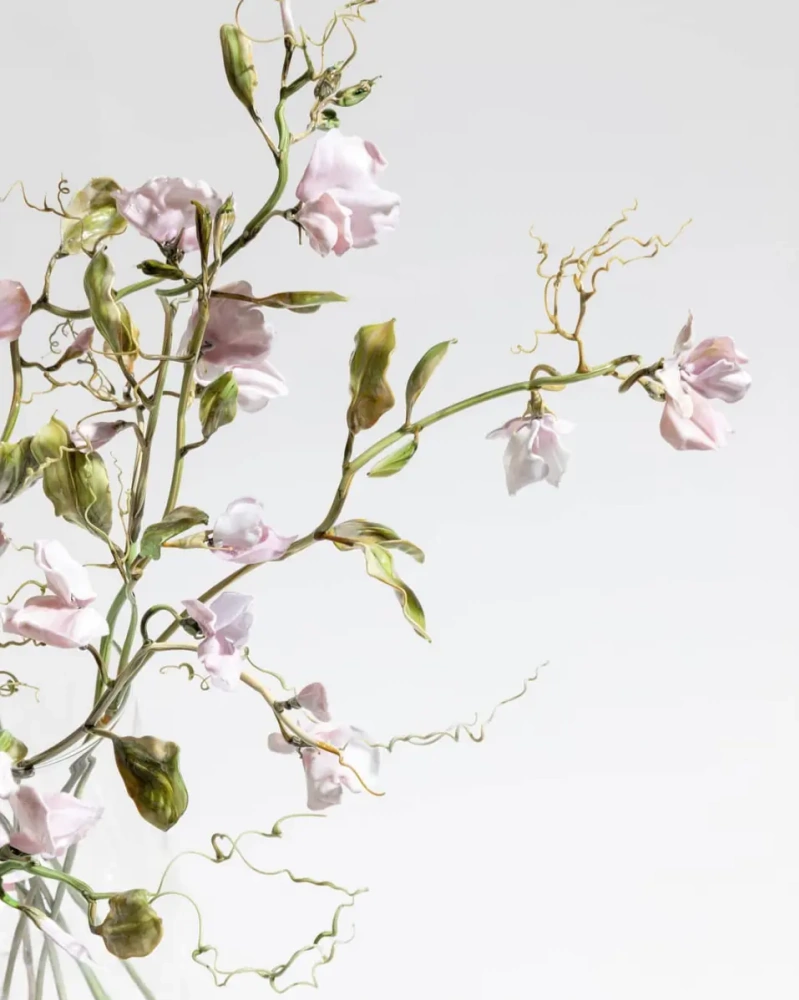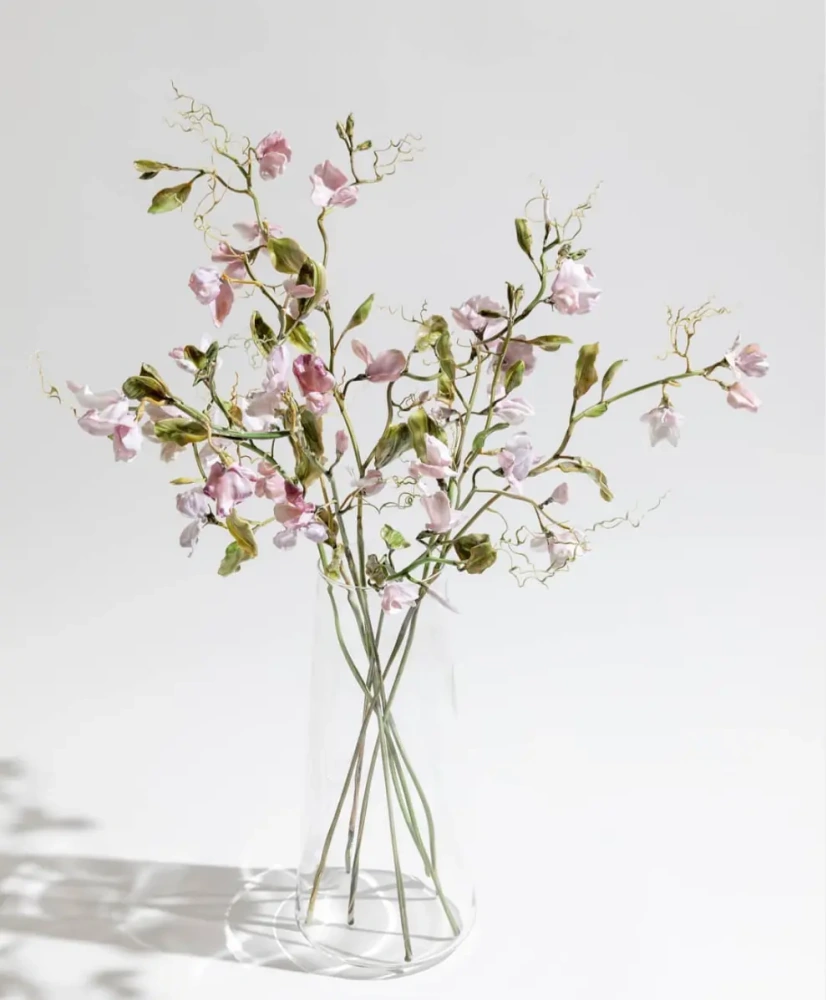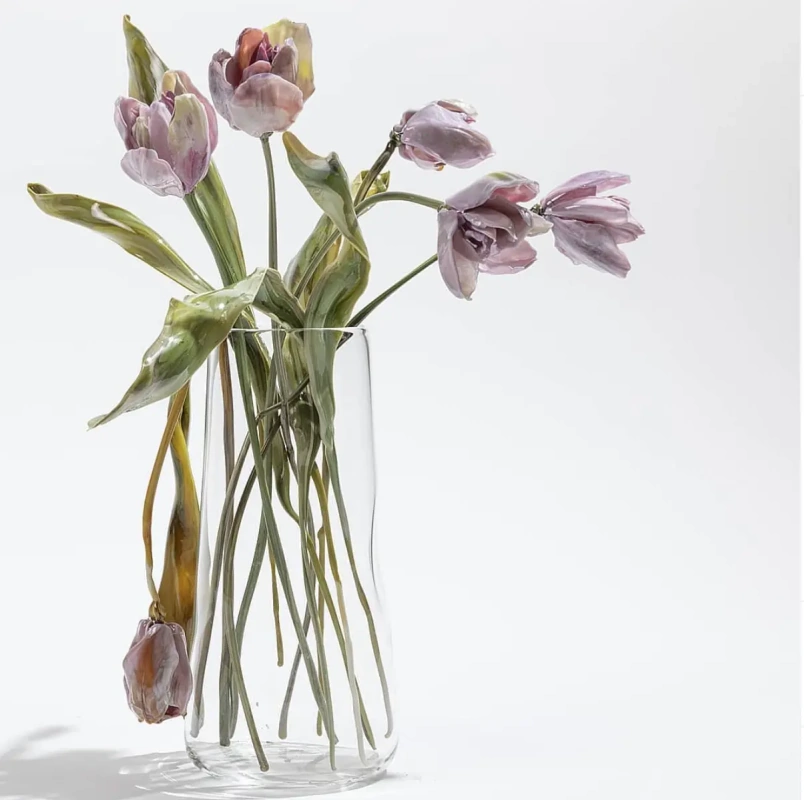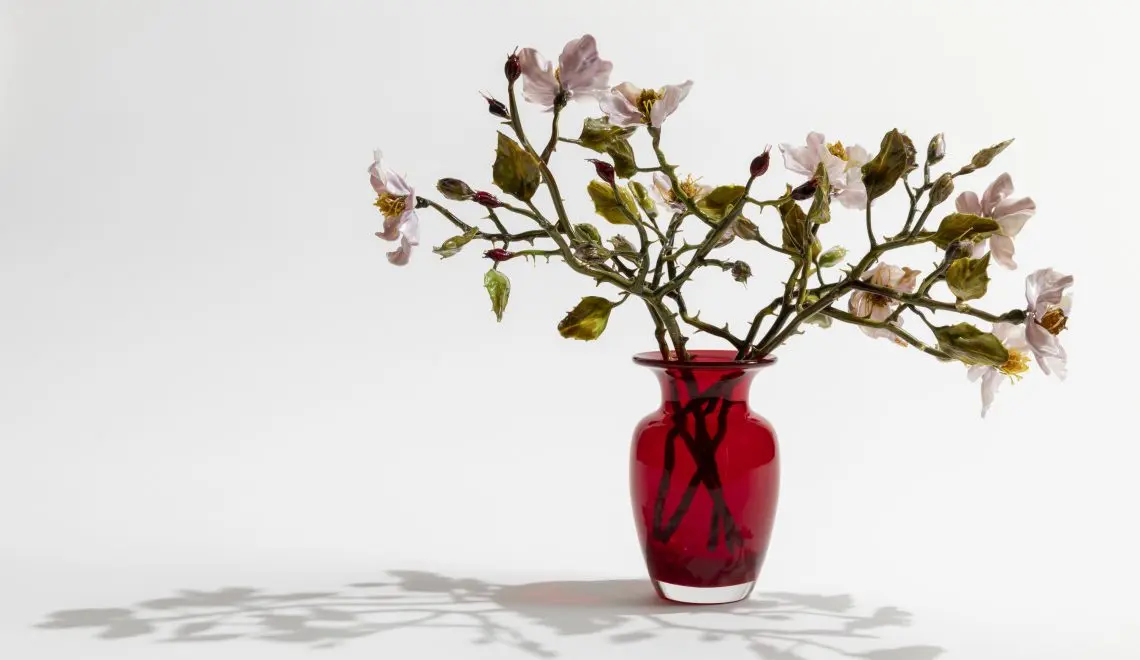Italian artist Lilla Tabasso creates amazingly graceful and realistic botanical sculptures from glass. And although her flowers, unlike the real ones, do not obey the laws of nature, Tabasso pays attention to the full life cycle of plants, including withering.
Swollen leaves, fading stems, crumbling petals… With a strong but very fragile material, Lilla Tabasso demonstrates the fragility of natural beauty. In the titles of the works of the artist often found the word “vanitas” – a reference to the genre of still life of the Baroque period. These allegorical paintings often included images of human skulls, rotting fruits and faded flowers, which symbolized the transience of life, the futility of earthly pleasures and the imminence of death.
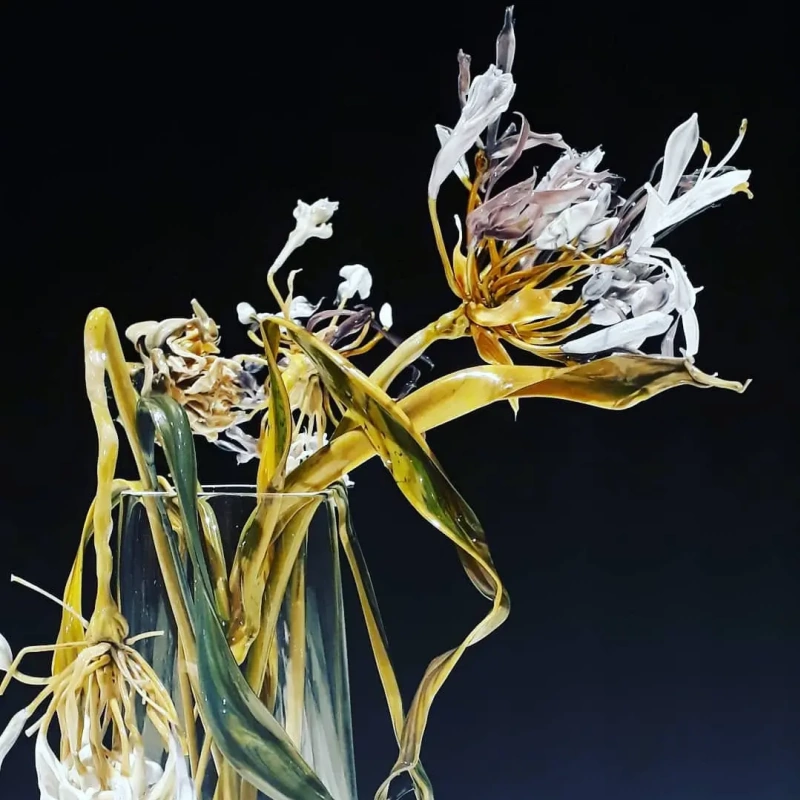

Lilla Tabasso’s glass sculptures are made even more realistic by the fact that she was trained as a biologist before beginning her career. And although she was born into a family that had been involved in the antiques trade for generations, the artist herself did not think that she would ever link her life with art.

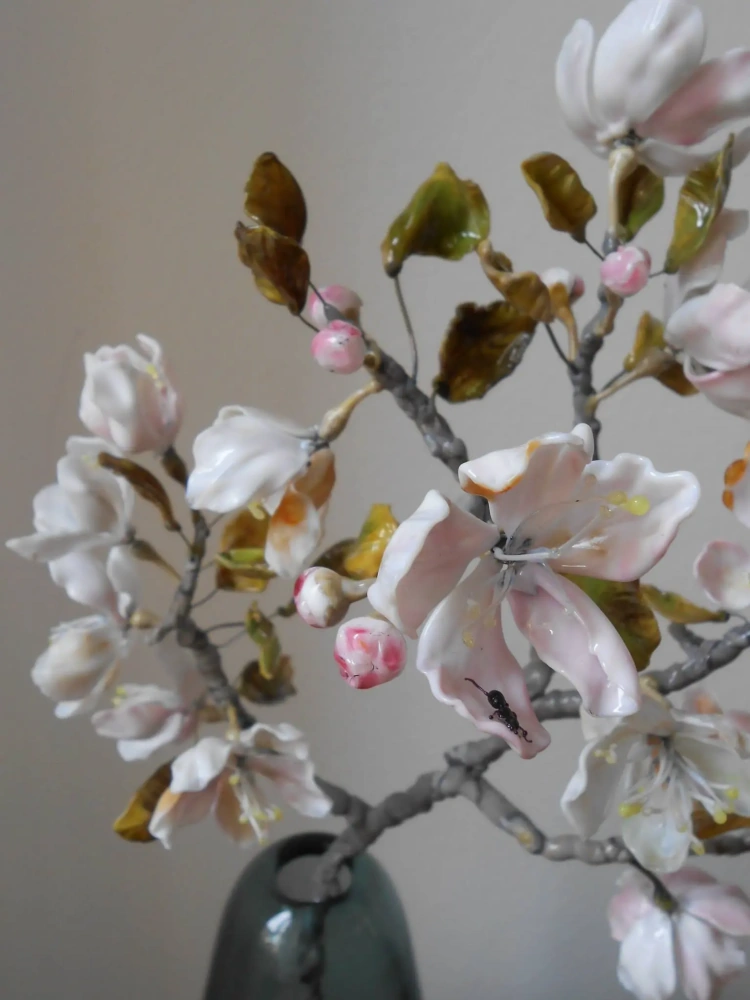

The first course of work with Tabasso glass took place in 2000. Before that, she had already been engaged in manufacturing jewelry made of Murano glass, but at some point she realized that she wanted and was quite capable of producing the necessary details on her own. A separate source of inspiration for her were the works of German masters of the XIX century Leopold and Rudolf Blaschka. On his first experiences with glass Tabasso recalls as follows: “It was love and hate at first sight. At first, I was very disappointed that I was not able to give the glass conceived form. But I did not give up, but continued to work on it.”

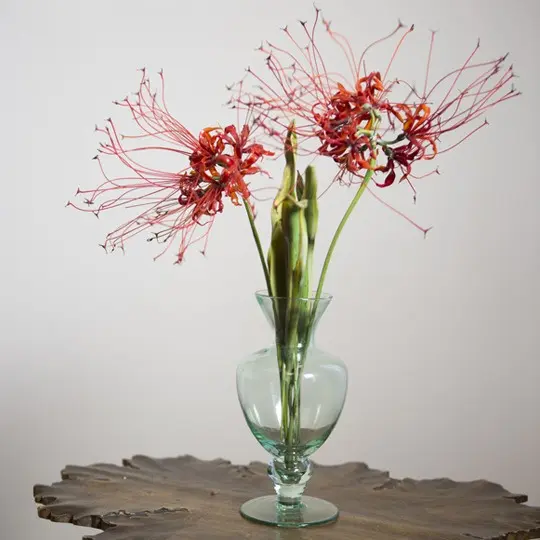
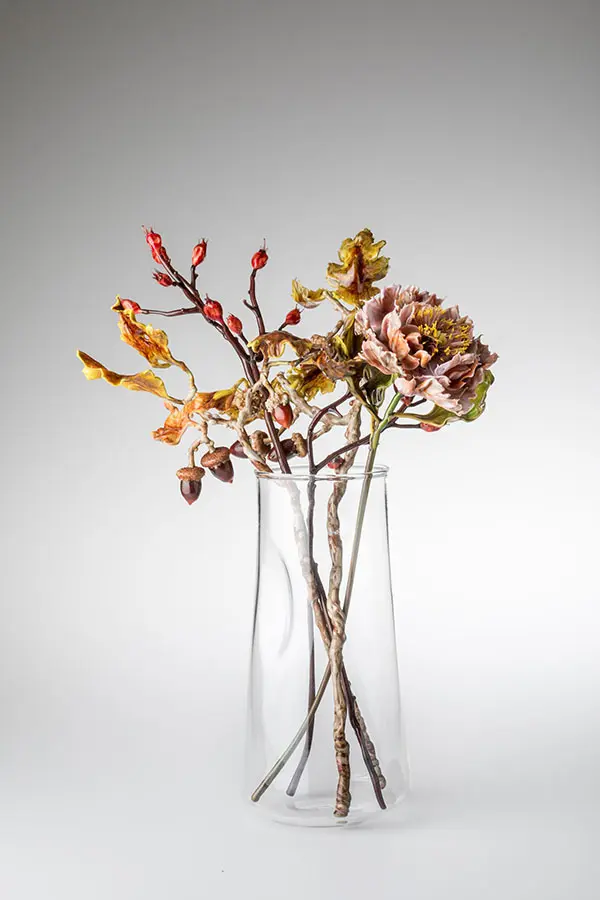
In her work, Lilla Tabasso uses thin rods of Murano glass in a variety of shades. The rods are heated with a soldering lamp and when the glass starts to melt, the desired shape is “moulded” or blown out.

